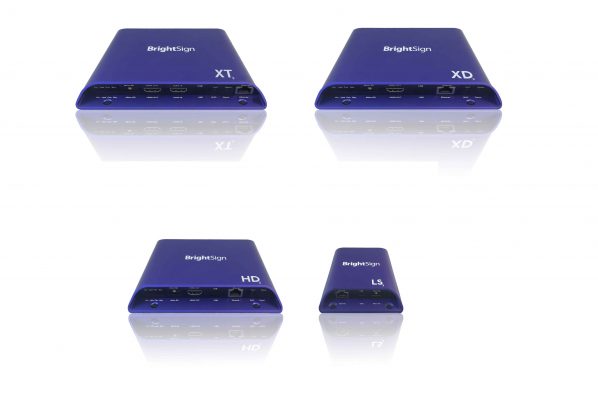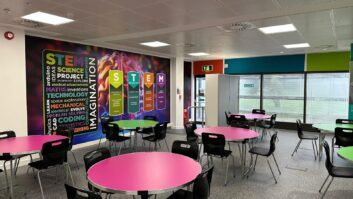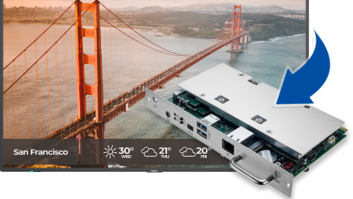
BrightSign has announced a complete refresh of its range of digital signage players, adding features such as HTML5, H.265 decoding and high dynamic range (HDR) across the complete range. At the same time the accompanying free BrightAuthor content software and BrightSign Network have been given enhanced functionality.
The new offering designed to cater to the increased popularity of networked solutions and managing large deployments which, according to BrightSign CEO Jeff Hastings, can routinely comprise thousands of players.
The range still is still divided into four product families, now called LS, HD, XD and XT. All of these bar the entry-level LS feature two models, with standard and expanded I/O packages.
All models have an M.2 slot, which can be used to house a Wi-Fi antenna. Additionally, the XD and XT ranges can utilise M.2 solid-state storage interface cards.
All models support HTML5. Rather than creating separate print and digital assets, “now pretty much every asset that gets used is used in the online world, and almost all of that is done in HTML5 – so by conforming to that, we’re making it easy for content developers to reuse content they’ve already used,” said Hastings. BrightAuthor enables the import of content from the market-leading Adobe Creative Suite.
Previously only available at the top of the range, H.265 encoding is now offered across the board. Hastings explained: “We expect a big trend in the industry to adopt the H.265 codec, as it improves image quality at dramatically lower bitrates. You save about 60-70% on the file size, and as you get more and more data moving around the network, that makes a big difference.”
All players also support the CEA’s HDR 10 standard, which enables the latest displays to display higher contrast and also make use of smoother, richer 10-bit colour.
IP video streaming is supported in the top three lines. The XT line also has the ability to encode HDMI data and stream it over the network. A potential application for this, said Hastings, would be a sports bar with multiple screens – rather than buying multiple TV receivers, it need only purchase one and use a Brightsign XT player to stream it to all the displays.
The HD, XD and XT players also support BrightAuthor’s Mosaic Mode. This enables a number of lower-resolution videos to be played in multiple zones – with a total resolution of full HD or 4K, depending on model.
4K is supported by the top two ranges. With the consumer TV market now selling more 4K models than HD, Hastings believes that the commercial display market will reach a similar tipping point soon.
The players also have a new slim industrial design, which, as well as looking distinctive in the usual BrightSign purple livery, take up less space behind the display; this is an important point, said Hastings, in applications looking to reduce the distance from the display to the wall – perhaps to comply with disability regulations.
B-Deploy is a powerful new feature that allows customers to set up and deploy multiple players – “from tens to thousands,” according to Hastings – all at once. It can be used with the BrightSign Network, a BrightSign partner CMS, or an on-premise secure corporate LAN with internet access. BrightSign Network, including the new B-Deploy feature, now supports media and player tagging for highly targeted content distribution to large networks of players.
Hastings cited figures from industry analyst IHS that puts BrightSign first in the global digital signage media player market, with a share of 7.1% – and he noted that the next half-dozen places were occupied by PC manufacturers.
“Our goal is focused on removing PCs from the digital signage market,” he said. During the BrightSign’s seven years of operation, its strategy has always been to take technology that has been designed for some other purpose – core chips for home gateways that distributed internet and TV around the home – and repurposing it for the digital signage industry. The bulk of the company’s engineering budget (80%) is devoted to software development.
He called the new range “another great step forward in beating the PCs in a market where they still have the majority of the market share”.
List prices for new models range from (US)$250 to $650.







